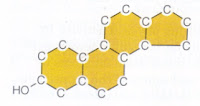It’s that time of year again, when the countdown to Christmas begins! Not only it is known for gift giving, the Christmas holiday is known for all the sweet treats, from cookies, cakes, and boxes of chocolate. The three common types of chocolate that is used in desserts are milk chocolate, white chocolate, and dark chocolate. Not all chocolate is created equally. There is a different process of how each type is made. One type has the most benefits over the other two, dark chocolate.
It’s no surprise that we hear about how beneficial dark chocolate is. WebMD notes, “Dark chocolate contains a lot more cocoa than other forms of chocolate. And standard chocolate manufacturing destroys up to half of the flavonoids. But chocolate companies have now learned to make dark chocolate that keeps up to 95% of its flavonoids.” A lot of us don’t know what flavonoids are and how it works. Realage.com states, “Flavonoids are plant-based compounds with powerful antioxidant properties, which means they reduce inflammation, promote healthy arteries, and help fight aging by preventing -- and repairing -- cellular damage. It may also protect against dementia, Alzheimer’s disease, and some cancers.”
 |
| Flavonoid: Epicatechin structure |
Other benefits of dark chocolate according to livestrong.com, “flavonoids has shown a positive influence in lowering blood pressure, reducing blood clotting and improving blood flow to the heart and brain. That means that flavonoids may be an important part of maintaining a healthy cardiovascular system.” Flavonoids are found in a lot of foods like apples, blueberries, broccoli, cabbage, capers, onions, strawberries, red grapes, red wine and all kinds of tea. Eating four servings of fruits and five servings of vegetables everyday is recommended.
Another way dark chocolate helps the body is that, it is full of antioxidants, “Antioxidants help free your body of free radicals, which cause oxidative damage to cells. Free radicals are implicated in the aging process and may be a cause of cancer, so eating antioxidant rich foods like dark chocolate can protect you from many types of cancer and slow the signs of aging.”
One research found that dark chocolate shouldn’t be consumed with milk. Mauro Serafini, PhD, of Italy's National Institute for Food and Nutrition Research in Rome, and colleagues says, "Our findings indicate that milk may interfere with the absorption of antioxidants from chocolate ... and may therefore negate the potential health benefits that can be derived from eating moderate amounts of dark chocolate."
We all endure stress at one point or another, dark chocolate is shown to help relieve stress:
“A study published by researchers from the Swiss Nestle Research Center -- admittedly an organization not without bias on the benefits of chocolate -- in the October 2009 issue of the "Journal of Proteome Research" looked at the benefits of dark chocolate on stress. Thirty people classified as having high or low anxiety traits ate 40 g of dark chocolate for up to 14 days. After two weeks, subjects had decreased levels of the stress hormone cortisol and catecholamines, hormones produced as part of the "fight or flight" reaction produced by the adrenal glands in response to stress.”
Next up are the not so nutritious types of chocolate, milk chocolate and white chocolate. Livestrong.com explains what milk chocolate is made of and why it’s not the same as eating dark chocolate:
“Dark chocolate contains a small amount of sugar and vanilla along with cocoa liquor, cocoa butter and cocoa powder, while milk chocolate contains these ingredients along with milk and more sugar. Although milk chocolate contains flavonoids, it doesn't provide the same benefits as dark chocolate. This is not just due to the lower levels of flavonoids contained in milk chocolate, but to a possible interaction between the flavonoids and the milk in milk chocolate. The milk may bind with the flavonoids, making them unavailable.”
White chocolate is the least nutritious of the three types of chocolate, fitday.com notes:
“White chocolate is the least nutritious of the three. Containing no cocoa, white chocolate is prepared from the cocoa butter from which the cocoa solids have been removed. This cocoa butter is combined with milk and sugar to create white chocolate. Because the majority of the bioflavanoids from chocolate come from the cocoa solids, white chocolate has very low nutritional value. White chocolate has cocoa solids, but its overall nutritional profile is reduced by the addition of milk and usually fairly large quantities of sugar. With more fat added via milk solids or even cream, and with additional calories from sugar or other sweeteners, milk chocolate's nutritional profile is higher than white chocolate's, but still not very high.”
Now you know the difference between the three types of chocolate. Dark chocolate reigns supreme in health benefits, milk chocolate interferes with flavonoids and white chocolate can’t even keep up. This doesn’t mean that you should go out and go dark chocolate crazy. Eating a small amount, about one ounce is advised. Dark chocolate is still filled with calories and should be eaten in moderation. When you do buy dark chocolate, look out for the ones with a cocoa content of 70 percent of higher.

























